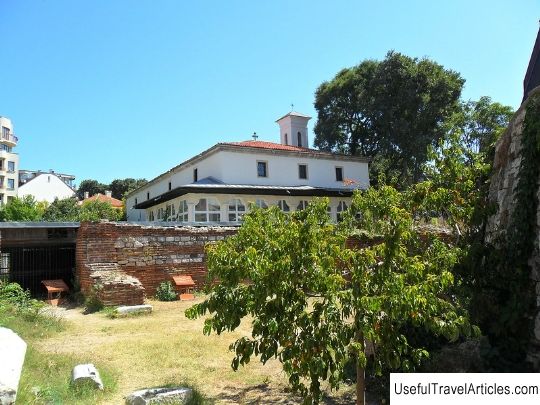Church of St. Atanasius description and photos - Bulgaria: Varna
Rating: 8,2/10 (301 votes) 
Church of St. Atanasius description and photos - Bulgaria: Varna. Detailed information about the attraction. Description, photos and a map showing the nearest significant objects. Photo and descriptionSt. Atanasia in Varna is located in the city center near the famous Roman baths. The construction of this Orthodox church dates back to August 1838; before, there was a small old church of the early 17th century on this site, which burned down two years earlier. According to some versions, before her there were two more medieval churches - 13-14 centuries. This temple among the local population is also called "the metropolitan's church", due to the fact that the services here were conducted by the Greek metropolitan. The Greeks served here until 1914, and in 1920 Russian priests came to the temple. Only in 1939 the temple was transferred to the jurisdiction of the diocese of Bulgaria thanks to Metropolitan Joseph. Services in this temple ceased in 1961, by order of local authorities, a museum of ancient icon painting was opened in the church building. However, thirty years later, on the day of the feast of St. Athanasius - January 18, divine services resumed in the temple. The temple operates to this day. In the Varna church of St. Atanasius has an iconostasis, which is a rare work of art. It was created by the masters of the famous Tryavna art school, using traditional carvings for this style with images of fish, lions, birds of paradise and weaving of vines and oak branches. Each pattern features solar rosettes. The iconostasis was restored in the seventies of the 20th century, & nbsp; it was returned to its original form. The iconostasis of the church of St. Athanasius with 28 icons. The image of St. Atanasius was painted by Dmitri, an icon painter from the city of Sozopol. Before the restoration of the temple in 1838, a Russian officer, Prince Urusov, who participated in the war with the Turks in 1828, was buried near the main entrance to the temple. After the erection of the new building, the burial was inside the church - between the entrance and the episcopal throne. In 1960, the tombstone was transferred to the Bulgarian Renaissance Museum. Today the temple is a three-aisled basilica, a large glazed vestibule resembles a veranda. The walls of the temple are covered with frescoes from the 19th century, which are quite well preserved. Recently, experts have established that under the paintings there is another layer of frescoes, more ancient, which dates back to the 17th century. Various ritual church utensils of the 18-19 centuries are exhibited in the temple.     We also recommend reading Arab Cultural Center description and photo - Ukraine: Odessa Topic: Church of St. Atanasius description and photos - Bulgaria: Varna. |




